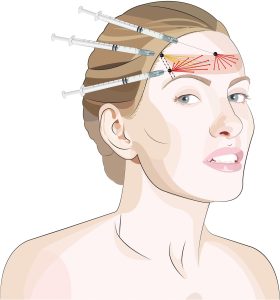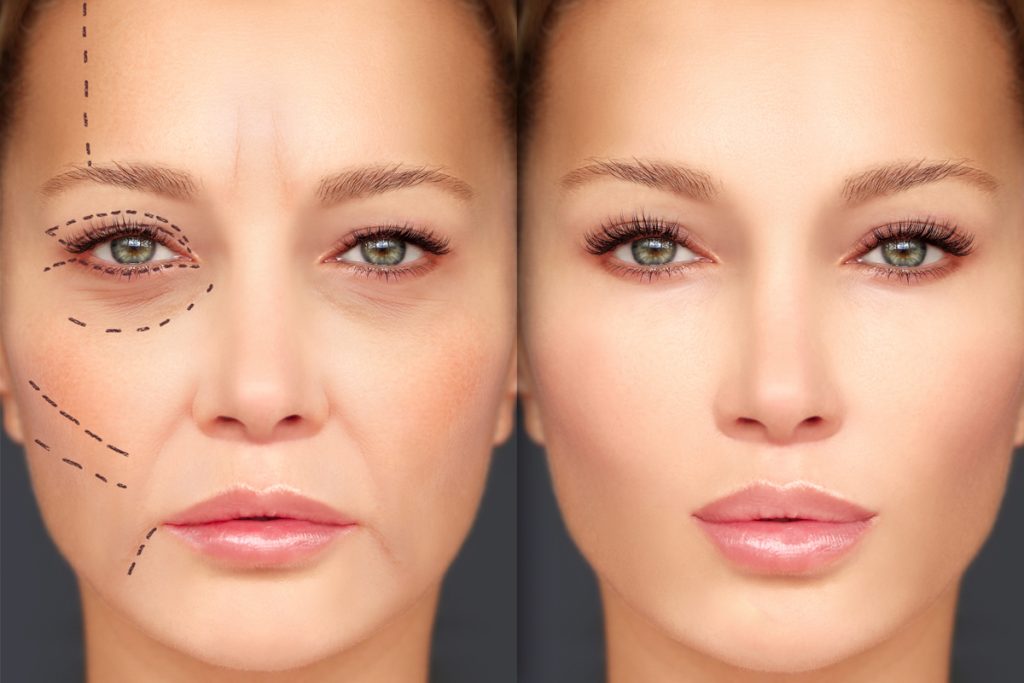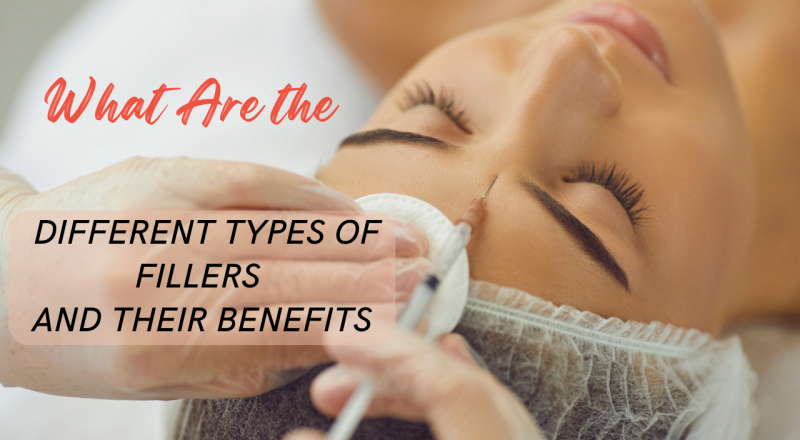In the ever-evolving world of aesthetics and beauty, cosmetic fillers have become popular for individuals looking to enhance their appearance without surgery. These non-invasive treatments offer a variety of advantages, from reducing wrinkles to adding volume and structure to the face.
The different types of cosmetic fillers used majorly are:
1. Hyaluronic Acid Fillers
Hyaluronic acid fillers, or HA fillers, are the most common and versatile types of cosmetic fillers. HA is a natural compound found in the body that plays a crucial role in maintaining skin hydration and elasticity. HA fillers are used to:
- Reduce wrinkles and fine lines: HA fillers can effectively smooth out wrinkles around the eyes, mouth, and forehead, providing a more youthful appearance.
- Restore volume: These fillers can add volume to the cheeks, lips, and other areas that have lost their fullness due to aging.
- Hydrate the skin: HA has the ability to retain water, which makes HA fillers an excellent choice for improving skin texture and hydration.
One of the significant benefits of HA fillers is that they are reversible, allowing for adjustments if needed. The results typically last from 6 to 18 months, depending on the product used and the treatment area.
2. Calcium Hydroxylapatite Fillers

Calcium hydroxylapatite, or CaHA, is a mineral-like compound found in bones. In filler form, it is used to:
- Correct deep wrinkles and folds: CaHA fillers are effective at filling in deeper lines and creases, such as nasolabial folds and marionette lines.
- Add volume to the face: They can provide a subtle lift and add volume and definition to areas like the cheeks.
CaHA fillers are known for their longevity, with results often lasting up to a year or more. The treatment stimulates collagen production, which can contribute to prolonged effects.
3. Poly-L-Lactic Acid Fillers
Poly-L-lactic acid (PLLA) is a synthetic substance that stimulates collagen production in the skin. PLLA fillers are used to:
- Improve skin texture: They can help reduce the appearance of fine lines, acne scars, and other textural irregularities.
- Restore volume: PLLA fillers gradually add volume to the face, creating a natural and youthful look.
One of the unique benefits of PLLA fillers is that their effects are gradual and long-lasting, often lasting up to two years. However, more than one session is usually required to achieve the desired results.
4. Polymethyl Methacrylate Fillers
Polymethyl methacrylate (PMMA) is a synthetic substance used in filler injections. PMMA fillers are primarily used for:
- Filling deep wrinkles and scars: They are ideal for treating deep wrinkles, acne scars, and contour irregularities.
- Adding long-lasting volume: PMMA provides a semi-permanent solution for volume loss in the face.
PMMA fillers are considered to be the most long-lasting among cosmetic fillers, with results lasting several years or more. However, due to their semi-permanent nature, they are not easily reversible.
5. Fat Transfer
Fat transfer, also called autologous fat grafting, involves harvesting fat from one area of the body and injecting it into another. This procedure is used to:
- Restore volume: It can add natural-looking volume to the face and other areas, such as the buttocks and breasts.
- Improve facial contours: Fat transfer can create more defined and youthful facial contours.
One of the major benefits of fat transfer is that it uses the patient’s own tissue, reducing the risk of allergic reactions. However, not all of the transferred fat survives, so multiple sessions may be needed to achieve the desired results.
6. Polycaprolactone Fillers
Polycaprolactone (PCL) is a biocompatible and biodegradable synthetic filler. PCL fillers are used to:
- Enhance facial contours: They can provide a subtle lift and definition to the cheeks, chin, and jawline.
- Stimulate collagen production: PCL fillers stimulate the production of collagen, which helps maintain results over time.
PCL fillers offer a long-lasting solution, with results typically lasting up to 2 years. They are versatile and can be used for both facial and body contouring.

What are the Benefits of Cosmetic Fillers?
Now that we’ve explored the different types of cosmetic fillers let’s delve into the overarching benefits of these treatments:
- Non-Surgical Approach: Cosmetic fillers offer a non-surgical alternative to achieve a more youthful and rejuvenated look without the risks and reduced time associated with surgery.
- Customizable Results: Skilled practitioners can tailor filler treatments to fulfill the unique needs and aesthetic goals of each patient, providing natural-looking results.
- Minimal Downtime: Most filler procedures require minimal downtime, allowing patients to get back to their daily lives shortly after treatment.
- Gradual and Long-Lasting Results: Depending on the type of filler used, results can be immediate or gradually improve over time. Many fillers offer long-lasting effects, reducing the frequency of touch-up treatments.
- Minimal Discomfort: Most filler injections are well-tolerated, with topical numbing agents or local anesthesia used to minimize discomfort during the procedure.
- Reversible Options: Some fillers, like HA fillers, are reversible, giving patients peace of mind that corrections can be made if necessary.
Cosmetic fillers have revolutionized the field of aesthetic medicine, offering a wide range of benefits to individuals seeking to enhance their appearance. From reducing wrinkles and fine lines to restoring volume and improving skin texture, different types of fillers cater to various aesthetic needs.
Before undergoing any cosmetic filler treatment, it’s important that you consult with a qualified and experienced practitioner who can assess your unique requirements and guide you toward the most suitable filler option. With the right approach, cosmetic fillers can help you achieve a refreshed and youthful look, boosting your confidence and self-esteem.
